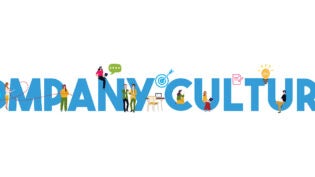A 3-Step Process for Creating a Sustainable Performance Culture
By: Bill Hogg

It’s no secret that all leaders want to have a higher performing culture. We want to meet our business goals and objectives, have a culture that attracts top talent, and be a place where people find value and enjoyment in their work. But getting to this point is easier said than done, and how you go about creating a new organizational culture is dependent on what your culture looks like today and what you want it to look like in the future.
Word of caution – Even if things are fine now, it surely doesn’t mean they always will be; this is why you need to invest in the development of a strong performance culture that will yield sustainable results.
Don’t start if you are not prepared to see it through. Creating a sustainable performance culture is a long term and ever evolving process. The real hard work starts when the initial excitement wears down.
Keep in mind that things will often get worse before they get better. If you are not in it for the long haul, don’t start the process—you could actually make your culture worse if you abandon plans part way through the change process.
As I have said previously in How Strong Performance Can Mask Issues in the Future, “Relying on current sales and performance can mask potential issues that put your organization’s future in jeopardy. A proactive approach is a must. Don’t wait for an issue to develop before you take action.”
If you are in a high growth phase, you may not see issues. However, you need to remain proactive and constantly ask:
- Are we being as efficient as possible?
- What can we do to be better?
- What would be the impact if growth leveled off and we were in a mature state?
You can’t rest because things are good now. A bump in the road will happen in the future so look for them now before they create an issue for your company.
There are three core steps for the process of creating a distinctive and sustainable performance culture:
1. Identify the next level of excellence
Identifying opportunities internally to create a change in culture and improve performance is a vital part of creating sustainable business results. Look for your future state and the next level of excellence for your organization to achieve—and then look for opportunities to get there. Always be asking, what can we do to improve?
To do this, you need to:
- Gather the facts and data about the areas of your business to be improved
- Identify the gaps that exist between where you are now and the next level of excellence
- Conduct surveys, interviews and focus groups to identify how you can get to the next level
- Address cultural challenges that could prevent you from getting to the next level
- Determine where leadership needs to refocus efforts
2. Design a plan to sustain performance culture
Once you understand where your organization is coming up short or where opportunities for improvement exist, you need to develop a comprehensive plan to make changes to improve performance culture.
Your plan should involve five important steps:
- Identify the high priority initiative that will have most impact on performance culture
- Change leaders’ practices and internal processes to influence a shift in performance
- Design the narrative for change—communicate the need for change within the context of business strategy and how it impacts all levels of the company
- Detail project objectives and plans for each performance change initiative – this includes timelines, measurements and goals
- Support with training/coaching
3. Establish and Deliver Measurables
Once your plan is in place, it’s time to implement it to achieve desired results. This is where most change initiatives fail—during the implementation phase. You must continually assess and monitor the impact of changes. To do this you need to measure the right things.
During this phase, some things you need to do include:
- Implement new performance standards that measure activities that will create the changes you are working towards, not the end result (i.e. first call resolution versus number of calls or time spent on phone)
- address concerns and issues as they arise in a transparent dialogue
- Actively solicit input, don’t wait for people to bring issues forward
- Hold people accountable to established and well understand measures that are transparent across the organization
Even if you are meeting performance standards today, it doesn’t mean you will meet them in the future. To create sustainable results, you need to continuously improve performance culture. This will have the desired effect on your bottom line.












